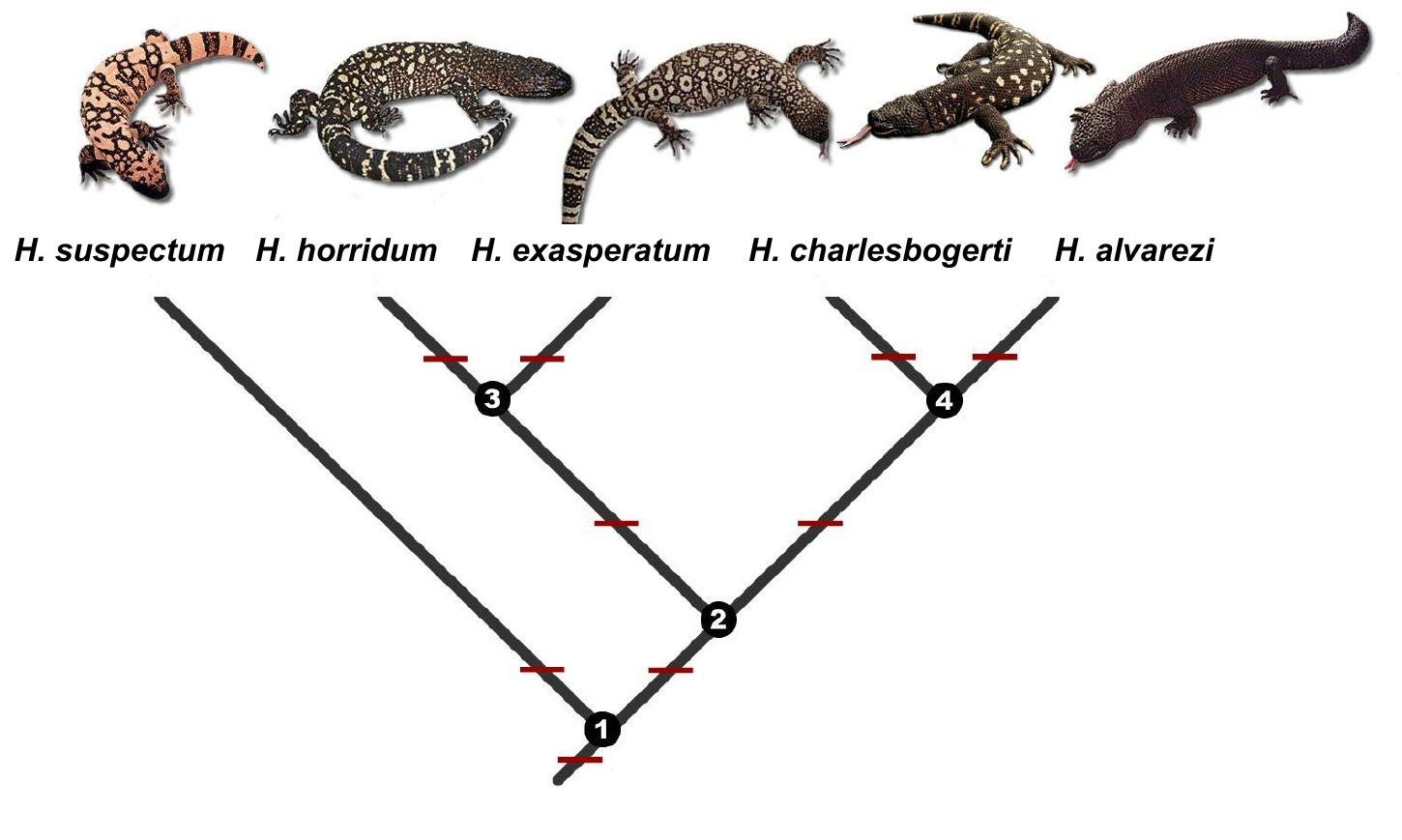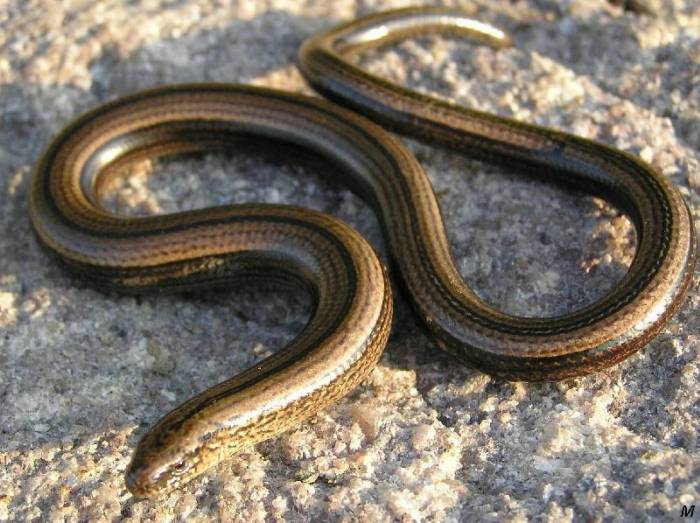|
Xenosauridae
Xenosauridae is a family of anguimorph lizards whose only living representative is the genus '' Xenosaurus'', which is native to Central America. Xenosauridae also includes the extinct genera '' Exostinus'' and '' Restes''. Also known as knob-scaled lizards, they have rounded, bumpy scales and osteoderms. Most living species prefer humid, rocky habitats, although they are widespread within their native regions, with some inhabiting semi-arid scrub environments. They are carnivorous or insectivorous, and give birth to live young. '' Shinisaurus'', the Chinese crocodile lizard, was once also regarded as a member of Xenosauridae, but most recent studies of the evolutionary relationships of anguimorphs consider ''Shinisaurus'' to be more closely related to monitor lizards and helodermatids than to ''Xenosaurus''. Xenosauridae is part of a larger clade A clade (), also known as a monophyletic group or natural group, is a group of organisms that are monophyletic – that is, compose ... [...More Info...] [...Related Items...] OR: [Wikipedia] [Google] [Baidu] |
Xenosauridae
Xenosauridae is a family of anguimorph lizards whose only living representative is the genus '' Xenosaurus'', which is native to Central America. Xenosauridae also includes the extinct genera '' Exostinus'' and '' Restes''. Also known as knob-scaled lizards, they have rounded, bumpy scales and osteoderms. Most living species prefer humid, rocky habitats, although they are widespread within their native regions, with some inhabiting semi-arid scrub environments. They are carnivorous or insectivorous, and give birth to live young. '' Shinisaurus'', the Chinese crocodile lizard, was once also regarded as a member of Xenosauridae, but most recent studies of the evolutionary relationships of anguimorphs consider ''Shinisaurus'' to be more closely related to monitor lizards and helodermatids than to ''Xenosaurus''. Xenosauridae is part of a larger clade A clade (), also known as a monophyletic group or natural group, is a group of organisms that are monophyletic – that is, compose ... [...More Info...] [...Related Items...] OR: [Wikipedia] [Google] [Baidu] |
Xenosaurus
''Xenosaurus'' is a genus of lizards. ''Xenosaurus'' is the only extant genus in the family Xenosauridae with 13 species currently recognized."Xenosauridae" and "''Xenosaurus'' ". The Reptile Database. www.reptile-database.org. Also known as the Middle American knob-scaled lizards found in southwestern Tamaulipas and eastern Guerrero on the Atlantic and Pacific versants of Mexico, respectively, south and east to Alta Verapaz, Guatemala. They can be found between 300 m and 2360 m of elevation in a wide variety of habitats ranging from xerophytic tropical scrub to cloud forest to tropical rain forest. Where they occupy moderately diverse places, including crevices and holes in limestone, spaces under volcanic boulders, crevices in volcanic rocks, karst limestone, limestone terrain, and hollow logs in dry areas where trees are sparse. A flattened body shape and a crevice-dwelling ecology generally characterize species in the group. In part because of their habitat specialization, ... [...More Info...] [...Related Items...] OR: [Wikipedia] [Google] [Baidu] |
Carusioidea
Carusioidea is a clade of lizards that includes the family Xenosauridae (knob-scaled lizards) from Central America and the extinct genus '' Carusia'' from the Late Cretaceous of Mongolia. It was named in 1998 after a sister-group relationship was found between ''Carusia'' and Xenosauridae. Phylogenetic analysis indicates that Carusioidea is the most basal clade within Anguimorpha. Features that help define Carusioidea include closely spaced orbits or eye sockets separated by fused frontal bones, a connection between the jugal and squamosal bones below the supratemporal arch, and a covering of bony osteoderms over the skull roof. Below is a cladogram A cladogram (from Greek ''clados'' "branch" and ''gramma'' "character") is a diagram used in cladistics to show relations among organisms. A cladogram is not, however, an evolutionary tree because it does not show how ancestors are related to d ... showing the phylogenetic relationships of carusioids from Gao and Norell (1998): ... [...More Info...] [...Related Items...] OR: [Wikipedia] [Google] [Baidu] |
Anguimorph
The Anguimorpha is a suborder of squamates. The group was named by Fürbringer in 1900 to include all autarchoglossans closer to '' Varanus'' and ''Anguis'' than ''Scincus''. These lizards, along with iguanians and snakes, constitute the proposed "venom clade" Toxicofera of all venomous reptiles. Evolution The oldest widely accepted member of Anguimorpha is ''Dorsetisaurus'' from the Late Jurassic of Europe and North America. In 2022, the genus ''Cryptovaranoides'' was described from the latest Triassic (Rhaetian) of England. ''Cryptovaranoides'' was recovered in the study as a crown-group Anguimorph, and therefore the oldest crown group-squamate, 35 million years older than any previously known crown-group squamate. Families Anguidae There are 9 genera found within the Anguidae family. They are characterized by being heavily armored with non-overlapping scales, and almost all having well-developed ventrolateral folds (excluding ''Anguis''). Anguidae members can, however ... [...More Info...] [...Related Items...] OR: [Wikipedia] [Google] [Baidu] |
Carusia
''Carusia'' is an extinct genus of lizards from the Late Cretaceous of Mongolia. It is a close relative of the family Xenosauridae, which includes living knob-scaled lizards. Fossils of the type and only species ''Carusia intermedia'' come from the late-Campanian age Barun Goyot Formation and have been found in the Flaming Cliffs, Ukhaa Tolgod, and Kheerman Tsav fossil localities. ''Carusia'' was first described in 1985 under the name ''Carolina intermedia'', but since the name ''Carolina'' was preoccupied by a genus of scarab beetles that had been named in 1880, it was renamed ''Carusia intermedia''. ''Carusia'' had initially been known from fragmentary skull material, complicating efforts to determine its evolutionary relationships with other lizards; it had variously been described as an indeterminate scincomorph, a xenosaurid, or some other type of autarchoglossan lizard convergent with xenosaurids. However, the discovery of 35 complete skulls in the 1990s, three of which ... [...More Info...] [...Related Items...] OR: [Wikipedia] [Google] [Baidu] |
Lizard
Lizards are a widespread group of squamate reptiles, with over 7,000 species, ranging across all continents except Antarctica, as well as most oceanic island chains. The group is paraphyletic since it excludes the snakes and Amphisbaenia although some lizards are more closely related to these two excluded groups than they are to other lizards. Lizards range in size from chameleons and geckos a few centimeters long to the 3-meter-long Komodo dragon. Most lizards are quadrupedal, running with a strong side-to-side motion. Some lineages (known as "legless lizards"), have secondarily lost their legs, and have long snake-like bodies. Some such as the forest-dwelling ''Draco'' lizards are able to glide. They are often territorial, the males fighting off other males and signalling, often with bright colours, to attract mates and to intimidate rivals. Lizards are mainly carnivorous, often being sit-and-wait predators; many smaller species eat insects, while the Komodo eats mammals a ... [...More Info...] [...Related Items...] OR: [Wikipedia] [Google] [Baidu] |
Xenosaurus Platyceps
''Xenosaurus platyceps'', the flathead knob-scaled lizard, is a lizard found in the Sierra Madre Oriental of Mexico. Its natural habitat is dry scrub forest and oak savanna. The species is endangered due to habitat fragmentation for the development of tourism and agriculture as well as predation by feral cat A feral cat or a stray cat is an unowned domestic cat (''Felis catus'') that lives outdoors and avoids human contact: it does not allow itself to be handled or touched, and usually remains hidden from humans. Feral cats may breed over dozens ...s. Currently, the flathead knob-scaled lizard does not live in a protected area.Mendoza-Quijano, F. 2007. ''Xenosaurus platyceps''. In: IUCN 2012. IUCN Red List of Threatened Species. Version 2012.2. . Downloaded on 4 April 2013. References Xenosauridae Reptiles described in 1968 Endemic reptiles of Mexico Fauna of the Sierra Madre Oriental {{lizard-stub ... [...More Info...] [...Related Items...] OR: [Wikipedia] [Google] [Baidu] |
Helodermatid
''Heloderma'' is a genus of toxicoferan lizards that contains five species, all of which are venomous. It is the only extant genus of the family Helodermatidae. Description The genus ''Heloderma'' contains the Gila monster (''H. suspectum'') and four species of beaded lizards. The Gila monster is a large, stocky, most of the time slow-moving reptile that prefers arid deserts. Beaded lizards are seen to be more agile and seem to prefer more humid surroundings. The tails of all species of ''Heloderma'' are used as fat storage organs. The scales of the head, back and tail are bead-like, containing osteoderms for better protection. The scales of the belly are free from osteoderms. Most species are dark in color, with yellowish or pinkish markings. Venom The venom glands of ''Heloderma'' are located at the end of the lower jaws, unlike snakes' venom glands, which are located behind the eyes. Also, unlike snakes, the Gila monster and beaded lizards lack the musculature to inject veno ... [...More Info...] [...Related Items...] OR: [Wikipedia] [Google] [Baidu] |
Lizard Families
This is a list of the extant lizard families. Lizards are an informal group of squamates. Taxonomy There are five infraorders which separate the lizards, these are: Diploglossa, Gekkota, Iguania, Platynota and Scincomorpha. This separation is based mainly on morphological similarities between family groups. The Diploglossans and Platynotans are two closely related infraorders which are very diverse families. Very few generalisations can be placed upon these families morphologically. Many species are limbless, while others have fully formed limbs. It is believed that these lizards are the closest lizard relation to the snakes. The Gekkotans are the second most diverse group of lizards. They can be morphologically distinguished by the absence of temporal arches, which allows greater moveability of the head. Most species also have cloacal sacs and fixed eyelids. The Iguanians are another diverse group of lizards. All iguanians are fully limbed. Most species ambush their prey, capt ... [...More Info...] [...Related Items...] OR: [Wikipedia] [Google] [Baidu] |
Blutwurstia
''Blutwurstia'' is an extinct genus of lizards from the Eocene of Wyoming. The type and only species is ''Blutwurstia oliviae''. It is closely related to the modern lizard ''Xenosaurus''. The genus name is derived from the German for blood sausage A blood sausage is a sausage filled with blood that is cooked or dried and mixed with a filler until it is thick enough to solidify when cooled. Most commonly, the blood of pigs, sheep, lamb, cow, chicken, or goose is used. In Europe and the A .... References {{Reflist Xenosauridae Prehistoric lizard genera Eocene North America Biota of Wyoming Fossil taxa described in 2022 ... [...More Info...] [...Related Items...] OR: [Wikipedia] [Google] [Baidu] |
Shinisaurus
The Chinese crocodile lizard (''Shinisaurus crocodilurus'') is a semiaquatic anguimorph lizard found only in cool forests in southeast China and northeast Vietnam. The Chinese crocodile lizard spends much of its time in shallow water or in overhanging branches and vegetation, where it hunts its prey of insects, snails, tadpoles, and worms. Individuals in captivity may be fed baby mice.Chinese Crocodile Lizard (''Shinisaurus crocodilurus''). The Sacramento Zoological Society. A rare and little-studied lizard, it is listed in Appendix I, which regulates international trade of specimens. This is the only species in the |
Taxa Named By Edward Drinker Cope
In biology, a taxon (back-formation from ''taxonomy''; plural taxa) is a group of one or more populations of an organism or organisms seen by taxonomists to form a unit. Although neither is required, a taxon is usually known by a particular name and given a particular ranking, especially if and when it is accepted or becomes established. It is very common, however, for taxonomists to remain at odds over what belongs to a taxon and the criteria used for inclusion. If a taxon is given a formal scientific name, its use is then governed by one of the nomenclature codes specifying which scientific name is correct for a particular grouping. Initial attempts at classifying and ordering organisms (plants and animals) were set forth in Carl Linnaeus's system in ''Systema Naturae'', 10th edition (1758), as well as an unpublished work by Bernard and Antoine Laurent de Jussieu. The idea of a unit-based system of biological classification was first made widely available in 1805 in the intro ... [...More Info...] [...Related Items...] OR: [Wikipedia] [Google] [Baidu] |
_(Varanus_exanthematicus).png)



